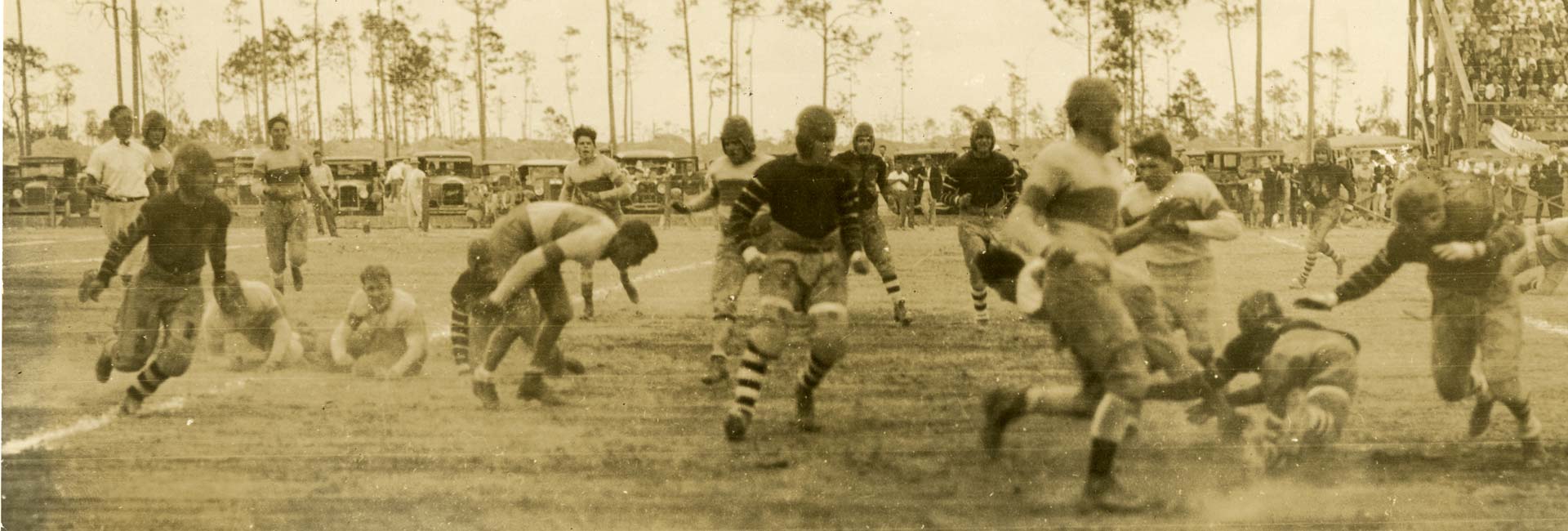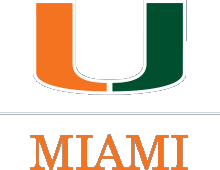

In Miami’s first season of football, the Hurricanes traded road trips with the University of Havana.
In 2017, the Miami Hurricanes football team will travel to its five scheduled road games via charter bus and charter plane.
In 1926, Miami’s first season of playing football, the team also used two modes of transportation for its only road game of the season—train and steamship. The trip? A post-Christmas visit to the University of Havana.
In fact, the Hurricanes played Havana twice around the holidays during their inaugural football season. Miami won both games by a score of 23-0.
According to author Christopher Perez, a UM alum who authored “Cuba: 50 Years of Playing American Football,” there were more than 50 football contests from 1906-56 between Cuban football teams and American football teams. The University of Havana started organized football in Cuba with its team, the Caribes, and was the primary opponent for the Miami Hurricanes. Cuba’s proximity to the United States made the Caribes a popular one at that.
“Football became popular in Cuba for the same reason it did in the United States,” said Michael Wood, an instructor in the Department of American Studies at the University of Alabama. “It was the same sort of draw—the violence, the organization and the blending of team identity and school spirit.”
About the Photo
In 1926, the football teams at the University of Miami and University of Havana squared off against each other. Photo courtesy of: University of Miami Archives.
Join the Conversation:
Follow on
Twitter:
Miami Hurricanes Football, @MiamiHurricanes
University of Miami, @univmiami
UM News, @univmiaminews
Miami’s first football team in 1926 under coach Howard Buck was a freshman squad. The Hurricanes defeated their first four opponents—Rollins, Florida Southern, Mercer and Stetson—by a combined score of 61-6 before preparing for a Thanksgiving Day game against Havana. Billed as the “College Football Thanksgiving Classic,” the game was held at University Stadium in Coral Gables. Havana’s team stayed at the Biltmore Hotel before heading to campus.
Wood, who did his doctoral dissertation on American football played between U.S. and Cuban teams during the early- to mid-1900s, and who also authors the Bacardi Bowl blog, wrote that Buck was nervous on the eve of the game.
“A report that appeared in The Miami News on the day before the game revealed Coach Buck's fears that his players were underestimating their opponents. The University of Havana Varsity, led by Coach James H. Kendrigan, outweighed the Miami Eleven by about five pounds per man and had more overall experience than the first-year team. Those fears were unfounded.”
Indeed they were. Miami jumped out to a 10-0 lead in the first quarter and never looked back. Most accounts of the contest indicate Havana never threatened the end zone.
UM won again two days later against Loyola University from New Orleans before taking a nearly month-long break. Then came the long trek to Havana’s home field for the December 27 game. Wood hasn’t found an official itinerary but he says the “typical route” would have been for the Hurricanes to take a train from Coral Gables to Key West before hopping a steamship to the island nation.
 Havana newspapers covered the game, which
was tight in the first half. Miami took a 9-0 lead into
halftime before scoring two touchdowns in the fourth quarter
to pull away. The media praised the Hurricanes’ defense but
also saluted the Caribes for keeping it close for much of
the game. In 1928, the Hurricanes hosted a Cuban club
team—Club Atlético de Cuba—and won handily, 62-0.
It was the first Miami football game that featured the
student band.
Havana newspapers covered the game, which
was tight in the first half. Miami took a 9-0 lead into
halftime before scoring two touchdowns in the fourth quarter
to pull away. The media praised the Hurricanes’ defense but
also saluted the Caribes for keeping it close for much of
the game. In 1928, the Hurricanes hosted a Cuban club
team—Club Atlético de Cuba—and won handily, 62-0.
It was the first Miami football game that featured the
student band.
Atlético’s head coach, as well as six players, flew from Havana on a Pan American airplane, allegedly landing on a street in Coral Gables. The rest of the team sailed to Key West and then took the now defunct Overseas Railroad to Miami.
Cuban football teams eventually played more than 20 U.S. college teams, including Alabama, Florida, LSU, Stetson and the University of Tampa. But when Fidel Castro took over in the aftermath of the Cuban Revolution in the late 1950s, athletic clubs were shuttered and football faded away.
“By 1961, all sports were consolidated under the government,” Wood said. “Football had always stayed within that upper class athletic culture that the University was a part of. It was popular among that small group but never really became popular among the masses in Cuba. It didn’t come close to baseball and boxing in terms of popularity.”
Many members of those athletic clubs migrated to Miami and other parts of the United States, where football was on the verge of becoming America’s most popular sport.
But American football could see its return to Cuba in the near future. One organization is currently in talks to stage a college exhibition game called the Cuba Libre Bowl in 2018. It would be the first American football game on Cuban soil in 62 years—and 92 years since the Hurricanes’ first football season included their first and only meetings with their college neighbors to the south.
- CARTER TOOLE / UM News
